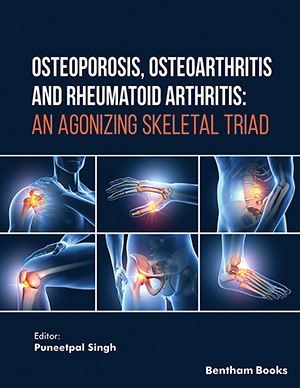
Abstract
Background: Ankylosing spondylitis (AS) is a chronic inflammatory disease known for causing pain, stiffness, and reduced mobility in the axial skeleton. Adalimumab, a tumor necrosis factor (TNF) inhibitor, has emerged as a promising therapeutic option for AS.
Methods: This systematic review involved a comprehensive search of randomized controlled trials related to AS treatment, conducted in major databases such as MEDLINE, Google Scholar, and PubMed. The search terms encompassed ankylosing spondylitis, adalimumab, methotrexate, other non-biologic DMARDs, glucocorticoids, NSAIDs, and analgesics. A total of 14 randomized controlled trials with 4,500 participants were included in the review.
Results: The review's results revealed that adalimumab demonstrated notable superiority when compared to a placebo. It effectively reduced disease activity, improved physical function, and lowered inflammatory markers such as C-reactive protein and erythrocyte sedimentation rate. Adalimumab demonstrated a favorable safety profile, with adverse events comparable to those observed with placebo.
Conclusion: Based on the results, adalimumab is deemed an effective treatment for AS, showcasing its potential as a first-line therapeutic option. Notably, no significant increase in adverse events was observed compared to placebo. However, the conclusion emphasizes the need for further studies with extended follow-up durations to ascertain the long-term efficacy and safety of adalimumab in AS management. This systematic review provides valuable insights supporting the use of adalimumab in the treatment of AS and underscores the importance of ongoing investigations into its long-term effects to optimize its clinical utilization in AS patients.
Keywords: Adalimumab, ankylosing spondylitis (AS), tumor necrosis factor (TNF), systematic review, efficacy, safety, randomized controlled trials.
[http://dx.doi.org/10.2147/OARRR.S44550] [PMID: 27790037];
(b) Rudwaleit M, Claudepierre P, Wordsworth P, et al. Effectiveness, safety, and predictors of good clinical response in 1250 patients treated with adalimumab for active ankylosing spondylitis. J Rheumatol 2009; 36(4): 801-8.;
(c) Lambert RG, Salonen D, Rahman P, et al. Adalimumab significantly reduces both spinal and sacroiliac joint inflammation in patients with ankylosing spondylitis: A multicenter, randomized, double-blind, placebo-controlled study. Arthritis Rheum 2007; 56(12): 4005.: 14.;
(d) Lebbink HR, Spoorenberg A, et al. The formation of autoantibodies and antibodies to TNF-alpha blocking agents in relation to clinical response in patients with ankylosing spondylitis. Clin Exp Rheumatol 2010; 28(5): 661-8.
[http://dx.doi.org/10.1007/s40259-020-00408-z] [PMID: 32078145]
[http://dx.doi.org/10.5152/eurasianjmed.2017.17116] [PMID: 29123446]
[http://dx.doi.org/10.1186/1471-2474-13-243] [PMID: 23227937]
[http://dx.doi.org/10.1016/j.aott.2016.06.010] [PMID: 27492583]
[http://dx.doi.org/10.1002/acr.23582] [PMID: 29669197]
[http://dx.doi.org/10.1302/2058-5241.4.180047] [PMID: 31423331]
[http://dx.doi.org/10.1093/rheumatology/kev340] [PMID: 26385369]
[http://dx.doi.org/10.1007/s10067-013-2278-3] [PMID: 23624589]
[http://dx.doi.org/10.1054/arth.2001.19160] [PMID: 11172281]
[http://dx.doi.org/10.3944/AOTT.2013.3103] [PMID: 24164942]
[http://dx.doi.org/10.1007/s10067-011-1819-x] [PMID: 21796348]
[http://dx.doi.org/10.1007/s10067-016-3431-6] [PMID: 27734230]
[http://dx.doi.org/10.1136/annrheumdis-2013-203963] [PMID: 24285490]
[http://dx.doi.org/10.1111/os.12254] [PMID: 27627719]
[http://dx.doi.org/10.1007/s10067-014-2575-5] [PMID: 24651916]
[http://dx.doi.org/10.1016/j.arth.2018.08.025] [PMID: 30342954]
[http://dx.doi.org/10.21823/2311-2905-2016-0-2-70-79]
[http://dx.doi.org/10.1093/rheumatology/key079] [PMID: 30445482]
[http://dx.doi.org/10.5535/arm.2013.37.5.675] [PMID: 24236255]
[http://dx.doi.org/10.3892/mmr.2017.6248] [PMID: 28259985]
[http://dx.doi.org/10.1007/s00296-017-3741-2] [PMID: 28526894]
[http://dx.doi.org/10.1186/s13075-018-1724-7] [PMID: 30285828]
[http://dx.doi.org/10.1177/1179544117751627] [PMID: 29343996]
[http://dx.doi.org/10.1016/S0140-6736(16)31591-4] [PMID: 28110981]
[http://dx.doi.org/10.1056/NEJMra1406182] [PMID: 27355535]
[http://dx.doi.org/10.3892/etm.2020.8564] [PMID: 32256790]
[http://dx.doi.org/10.1007/s40744-020-00248-x] [PMID: 33170493]
[http://dx.doi.org/10.3899/jrheum.190299] [PMID: 31474599]
[http://dx.doi.org/10.1186/s13075-019-1908-9] [PMID: 31138285]
[http://dx.doi.org/10.1177/03946320140270S102] [PMID: 24774504]
[http://dx.doi.org/10.1002/jcph.1348] [PMID: 30476367]
[http://dx.doi.org/10.3899/jrheum.150389] [PMID: 26472421]
[http://dx.doi.org/10.1007/s00296-013-2772-6] [PMID: 23686218]
[http://dx.doi.org/10.1002/art.38070] [PMID: 23818109]
[http://dx.doi.org/10.1007/s12016-017-8623-6] [PMID: 28717941]
[http://dx.doi.org/10.1136/annrheumdis-2011-201244] [PMID: 22562972]
[http://dx.doi.org/10.2147/OARRR.S32582]
[http://dx.doi.org/10.1016/j.jpeds.2018.05.042] [PMID: 30054164]
[http://dx.doi.org/10.3389/fphar.2019.01497] [PMID: 31920675]
[http://dx.doi.org/10.1016/S0140-6736(19)30952-3] [PMID: 31280967]
[http://dx.doi.org/10.1002/14651858.CD012878.pub2] [PMID: 31742665]
[http://dx.doi.org/10.1111/bcp.12509] [PMID: 25223394]
[http://dx.doi.org/10.1007/s10067-014-2498-1] [PMID: 24487484]
[http://dx.doi.org/10.1007/s00296-014-3006-2] [PMID: 24728068]
[http://dx.doi.org/10.1136/annrheumdis-2014-206588] [PMID: 25433018]
[http://dx.doi.org/10.1177/2040622318772705] [PMID: 30065812]
[http://dx.doi.org/10.1007/s40265-015-0503-x] [PMID: 26586242]
[http://dx.doi.org/10.1016/j.cgh.2013.06.019] [PMID: 23856361]
[http://dx.doi.org/10.3390/ijms19082244] [PMID: 30065229]
[http://dx.doi.org/10.1136/gutjnl-2016-312581] [PMID: 28119352]
[http://dx.doi.org/10.1016/S0140-6736(13)61751-1] [PMID: 24168956]
[http://dx.doi.org/10.3390/ijms22052719] [PMID: 33800290]
[http://dx.doi.org/10.2217/imt-2022-0181] [PMID: 36748363]
[http://dx.doi.org/10.1136/annrheumdis-2012-202533] [PMID: 23475983]
[http://dx.doi.org/10.1002/acr.22191] [PMID: 24151222]
[http://dx.doi.org/10.1007/s40744-021-00416-7] [PMID: 34962620]
[http://dx.doi.org/10.1007/s40744-019-0146-6] [PMID: 30788779]
[http://dx.doi.org/10.1007/s11926-015-0535-y] [PMID: 26286179]
[http://dx.doi.org/10.1136/annrheumdis-2012-201766] [PMID: 22772328]
[http://dx.doi.org/10.1093/rheumatology/keu438] [PMID: 25541333]
[http://dx.doi.org/10.1002/art.39298] [PMID: 26401991]
[http://dx.doi.org/10.3389/fphar.2020.606497] [PMID: 33364967]
[http://dx.doi.org/10.1080/14712598.2018.1430760] [PMID: 29350566]
[http://dx.doi.org/10.1016/S2665-9913(19)30013-X] [PMID: 38229357]
[http://dx.doi.org/10.1080/14712598.2018.1468884] [PMID: 29681195]
[http://dx.doi.org/10.1038/nrrheum.2015.110] [PMID: 26282080]
[http://dx.doi.org/10.1056/NEJMhle1800125] [PMID: 29791832]
[http://dx.doi.org/10.7249/PE264]
[http://dx.doi.org/10.1016/S0140-6736(17)30068-5] [PMID: 28502609]
[http://dx.doi.org/10.1136/annrheumdis-2015-208783] [PMID: 27117698]
[http://dx.doi.org/10.3390/jcm8070956] [PMID: 31269678]
[http://dx.doi.org/10.1007/s10067-021-05943-w] [PMID: 34709497]
[http://dx.doi.org/10.5152/eurjrheum.2018.18162] [PMID: 30388073]
[http://dx.doi.org/10.12659/AJCR.936600] [PMID: 35776690]
[http://dx.doi.org/10.1007/s11926-017-0654-8] [PMID: 28386763]
[http://dx.doi.org/10.1111/eci.12913] [PMID: 29460306]
[http://dx.doi.org/10.1007/s40265-019-01075-3] [PMID: 30793255]
[http://dx.doi.org/10.1038/s41413-019-0057-8] [PMID: 31666997]
[http://dx.doi.org/10.3389/fpubh.2020.602334] [PMID: 33330342]
[http://dx.doi.org/10.1007/s40744-016-0036-0] [PMID: 27747578]
[http://dx.doi.org/10.1371/journal.pone.0126105] [PMID: 26185984]
[http://dx.doi.org/10.7573/dic.212556] [PMID: 30483351]
[http://dx.doi.org/10.1111/1756-185X.13277] [PMID: 29611342]
[http://dx.doi.org/10.2217/cer-2016-0020] [PMID: 27417564]
[http://dx.doi.org/10.3899/jrheum.131287] [PMID: 25362661]
[http://dx.doi.org/10.1002/acr.22730] [PMID: 26414460]
[http://dx.doi.org/10.3233/BMR-169657] [PMID: 29504521]
[http://dx.doi.org/10.1111/1756-185X.13696] [PMID: 31576680]
[PMID: 28240589]
[http://dx.doi.org/10.1111/1756-185X.12245] [PMID: 24506823]
 34
34 2
2










